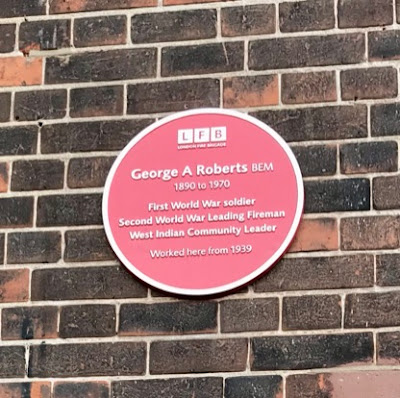New Cross Fire Station, in Queens Road SE14, was built in 1894 and has survived two World Wars and a threat to close it from Boris Johnson.
For much of the 19th century what fire service there was in London was privately run by the London Fire Engine Establishment or by local volunteers. Locally there was a Prince of Wales Volunteer Fire Brigade, based in Henry Street, Hatcham (now Briant Street SE14). An 1864 report noted that they had been called out 39 times between April and November of that year, showing 'how much a fire brigade was needed in this now densely populated neighbourhood' (Kentish Mercury, 19/11/1864). The following year the Metropolitan Fire Brigade was established by the Metropolitan Board of Works before being taken over by the new London County Council in 1889.
New Cross was one of the first fire stations to be built by the LCC. It is a grand building with what Historic England describe as a 'romantic, château-like exterior' (it is now a Grade II listed building). When it was built the practice was for all firemen (and in those days they were all men) to live on site. So the station included flats for the married officers and a dormitory for the unmarried ones.
There was also a stable block for the horses that pulled the fire engines. Nowadays people tend to look back nostalgically to the days of horse drawn transport, but it could be just as dangerous as motor vehicles. A fireman from New Cross station, E.R. Watts was killed after horses pulling his vehicle bolted on Old Kent Road (Hull Daily Mail, 26/3/1910). In 1899 a cyclist was trampled to death after being knocked off his bike by horses pulling a bus in Queens Road opposite the fire station (Portsmouth Evening News, 5/9/1899).
With a permanent community on site in those early days, there was plenty of socialising as well as fire fighting. In 1903 for instance there was the fourth annual 'Firemen's Ball at New Cross' for 200 guests, with dancing ' kept up with much zest until the early hours of the morning'. In the same week 200 children 'had tea at the station, and were afterwards entertained with cinematograph pictures and 'Punch and Judy' (Kentish Mercury - Friday 09 January 1903). A few years later 'An excellent evening's entertainment' at the station included dancing and turns from 'prominent vaudeville artistes' including Arthur Lloyd and W.P. Dempsey. Once again 'a right merry time was spent until the early hours' (Music Hall and Theatre Review, 7/4/1910).
A plaque outside the station, unveiled in 2018, commemorates George Arthur Roberts BEM (1890-1970). Born in Trinidad, he was lived through the Battle of the Somme as a First World War solider and later became one of London's first black firefighters, serving at New Cross Fire Station throughout World War Two. In the 1930s he was one of the founders and a member of the Executive of the early civil rights organisation the League of Coloured Peoples (whose President, Harold Moody, lived at 164 Queens Road).
Firefighters from New Cross took part in the first national fire brigades strike in December 1977 - a photograph from the time shows a New Cross placard saying 'we thank the public for all your support'
In 2013, New Cross was listed in a report of stations being considered to be permanently closed by Boris Johnson as part of his spending cuts while Mayor of London. After much opposition, New Cross was spared though others at Southwark, Downham and Woolwich were closed.
Over 125 years countless fires have been extinguished and lives saved by the firefighters at New Cross, long may it continue.
 |
| (Banner at New Cross Fire Station, 2013) |
 |
| 'We save lives not banks!' - firefighters at New Cross during the national strike about pensions in November 2013 |






.jpg)













1 comment:
While looking for another topic on St. Laurence Church you have, I believe, covered I have to stop at this spot for New Cross Fire Station which I live close to. Whenever I have passed it almost takes your breath away for its glorious whimsical gothic style for a municipal building. And, as you say it looks like a chateau, castle or if lifted and stuck on the side of a Bavarian high hillock could be seen as some old emperor's summertime schloss. Would love to climb its quaint turret. An absolutely glorious London building. Thank you
Post a Comment